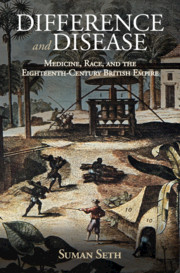Bibliography
Published online by Cambridge University Press: 08 June 2018
- Type
- Chapter
- Information
- Difference and DiseaseMedicine, Race, and the Eighteenth-Century British Empire, pp. 291 - 318Publisher: Cambridge University PressPrint publication year: 2018

